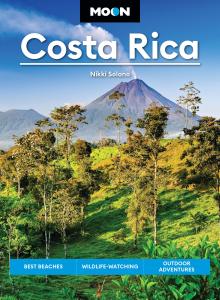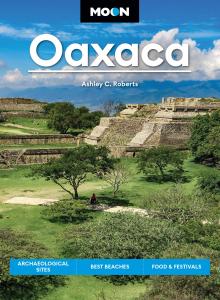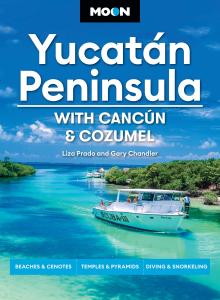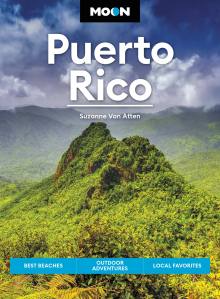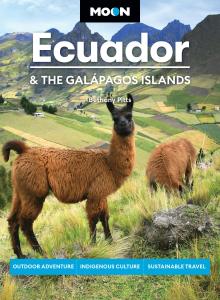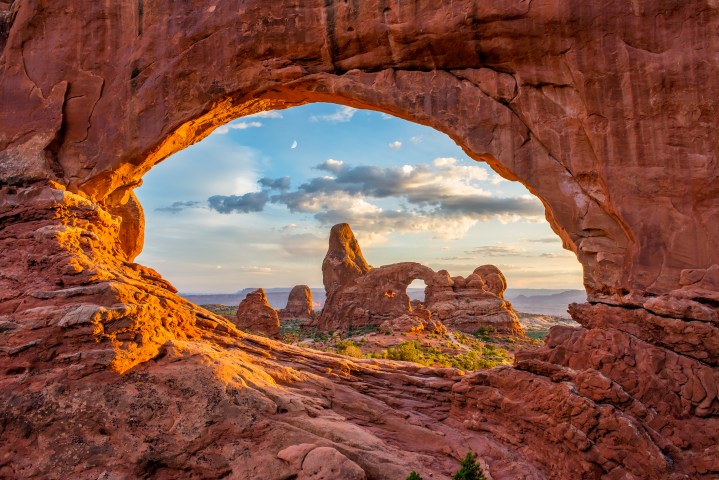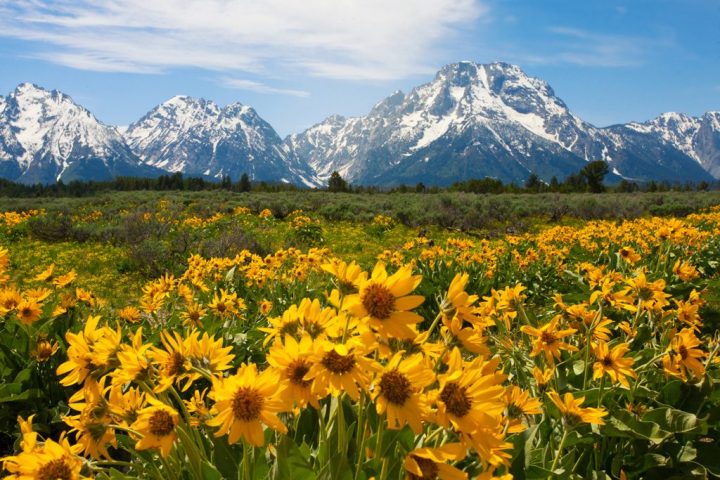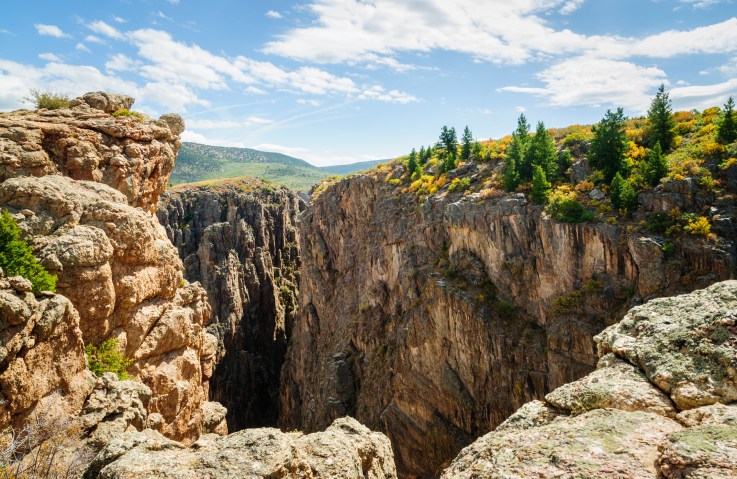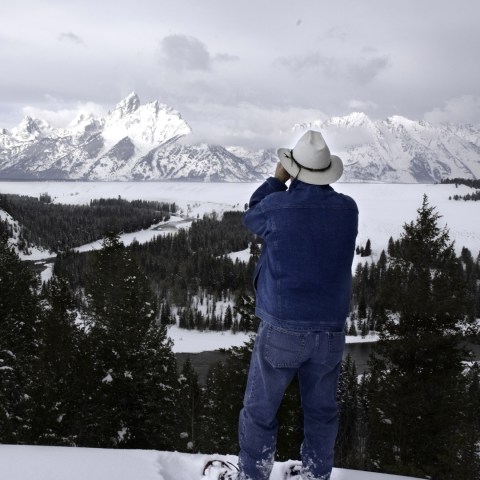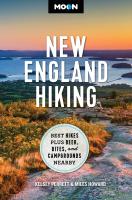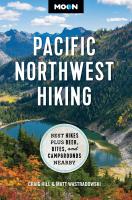Best National Parks in Latin America

Don’t limit your outdoor adventures to only the national parks in the Continental US. While they’re full of amazing sights and one-of-a-kind destinations, consider adding these breathtaking Latin American National Parks to your bucket list!
Immerse yourself in a wealth of different cultures while exploring unique ecosystems and their endemic wildlife. With fewer crowds making for more secluded experiences, you can enjoy a multitude of activities across these parks—from hiking and birdwatching to swimming and beach lounging. Read on for our list of the best national parks in Latin America.
Costa Rica
Parque Nacional Manuel Antonio
One of Costa Rica’s most beloved and busiest attractions, Parque Nacional Manuel Antonio is also one of its smallest national parks, occupying less than 5,000 acres of land and 60,000 acres of ocean. The park’s visitors come for beautiful crescent beaches, where monkeys are known to fraternize with people on the sand.
The park is jam-packed with trails, beaches, and lookout points, with well-designed and maintained trails that lead through forested areas (where sightings of two-toed and three-toed sloths are nearly guaranteed). If your ideal day in Costa Rica combines beach relaxation, light nature exploration, and wildlife encounters, you can tick off all three with just a few hours in this park.
Parque Nacional Corcovado

Extraordinary biodiversity, vast primary forest, dense vegetation, and trails that go deep into remote wilderness make Parque Nacional Corcovado a bucketlist experience for any big-hike adventurer or avid nature lover.
The protected land and marine area occupies much of the Osa Peninsula’s inland region as well as a 25-mile stretch of its western coastline. It is the top attraction in Costa Rica’s south end and visits often lead to surprise encounters with some of the rarest wildlife species you can see in the country—and the world.
Oaxaca, Mexico
Parque Nacional Huatulco
The Bahías de Huatulco, with its nine bays and 30-plus beaches, is brimming with arguably the state’s (possibly the whole country’s) most beautiful and pristine beaches. You’ll find Parque Nacional Huatulco situated along the western coast of this region, with the bays Órgano, Maguey, Cacaluta, Chachacual, and San Agustín all encompassed by the park.
Expect to be enchanted by the shifting shades of turquoise and aquamarine of the calm waters, delighted by the rainbow-colored fish swimming just feet from the shore, or enjoying an untouched beach all by your happy lonesome.
Parque Nacional Lagunas de Chacahua
The Parque Nacional Lagunas de Chacahua comprises 55 square miles of lush tropical vegetation and mangrove forests and seven salty lagoons. Tens of thousands of migratory birds call this a temporary home, and some, just like some of us, become so enamored of the place that they never leave.
You’ll see many pelicans, herons, and other birds that also stop by Manialtepec. The Afro-Mexican town of Chacahua, on Isla Chacahua, has cabañas, palapa restaurants, and unmatched hospitality that will tempt you to pause your travels as well.
Yucatán Peninsula, Mexico
Parque Nacional Arrecifes de Cozumel

All around Isla Cozumel, the Caribbean Sea glitters a hundred shades of blue. Beneath the waves, pristine coral reefs make for spectacular diving and snorkeling, the island’s number one draw. Encompassing the southern half of the island is Parque Nacional Arrecifes de Cozumel, home to the Santa Rosa Wall—a spectacular and iconic Cozumel dive.
With a sensational dropoff that begins at 72 feet, Santa Rosa is famous for its tunnels, caves, and stony overhangs. Ask to start your dive on the northern end, where there are a series of swim-throughs that lead to the shallows. Keep your eyes peeled, you’re sure to see loads of sea life along the way!
Parque Nacional Isla Contoy
Peeking out of a crystal-clear sea and dotted with saltwater lagoons, mangroves, and coconut palms, Isla Contoy is home to over 150 species of birds, including herons, brown pelicans, frigates, and cormorants, and is a preferred nesting ground for three different species of endangered sea turtles.
The island was decreed a national park in 1998, and its only structures are a three-story viewing tower, a visitor center, and a small museum; a few trails allow for appreciating the otherwise pristine island environment. Just 15 miles north of Isla Mujeres, Isla Contoy is a popular and rewarding outing for nature buffs and day-trippers alike.
Patagonia
Parque Nacional Monte León
Monte León’s 19-mile shoreline and headlands are an ecological wonderland of copious wildlife and uncommon landscapes. Little-known and less visited, this former cattle ranch is Argentina’s second coastal national park, after Parque Nacional Tierra del Fuego.
While wildlife-watching is the principal activity, the landscape here is another great reason to visit this park. Where the tides meet the headlands, the sea has eroded deep caverns; the most famous one of which is called La Olla (or The Kettle), due to its almost perfectly circular opening.
Parque Nacional Torres del Paine

The striking granite spires of Chile’s premier national park have truly become an international emblem of alpine majesty. Unlike many South American parks, Parque Nacional Torres del Paine has an integrated network of hiking trails suitable for day trips and backpacking treks, endangered species such as the wild guanaco in a UNESCO-recognized World Biosphere Reserve, and accommodations options from rustic campgrounds to cozy trail huts and five-star luxury hotels.
Almost everybody visits the park to behold extraordinary natural features such as the Torres del Paine, the sheer granite towers that defy erosion even as the weaker sedimentary strata around them have weathered, and the jagged Cuernos del Paine, with their striking interface between igneous and metamorphic rocks.
Puerto Rico
El Yunque National Forest
While technically considered a National Forest (not a National Park), we have to mention El Yunque National Forest, as it’s the crown jewel of Puerto Rico’s natural treasures. It is the only true tropical rainforest in the United States, and encompasses 29,000 acres. This ecologically diverse wonderland is home to thousands of native plants, as well as a variety of birds and reptiles.
Spanning the park is the Sierra de Luquillo, a steep and densely forested mountain range, the highest peak being El Toro at 3,526 feet above sea level. To get the most out of your visit to El Yunque, plan to spend a full day—especially if you want to do some hiking. But because the forest is so easily accessible by vehicle, it is also possible to do a quick driving tour in an hour or so.
Chile
Parque Nacional Alerce Andino
Lagoons where austral parakeets roost, tumbling waterfalls, and 3,000-year-old forests characterize Parque Nacional Alerce Andino. It’s an exceptional example of endism: one in three species found here are seen nowhere else on Earth, and the trails pick their way through thick tracts of virgin Valdivian temperate rainforest forest and past 50 or so lagoons.
Wildlife is particularly rich here, too—from the rare monito del monte, to the reserved pudú (the world’s smallest deer) and many species of birds. Best of all, the more challenging access to the park means this park has preserved its remote, magical atmosphere.
Parque Nacional Queulat
Dramatic egg-blue Ventisquero Colgante del Queulat (Queulat Hanging Glacier), clinging precariously to the mountain above the icy Laguna Témpanos, is the most famous sight in bewitching Parque Nacional Queulat, east of the village of Puyuhuapi.
The glacier’s exaggerated blues are perfectly contrasted against the dark green of the forest. Evergreen southern beeches line the hills around Laguna Témpanos, the lake that captures the great hunks of ice that splinter from the glacier’s snout. If you’re looking to hike, the most impressive trail is the moderate Sendero Mirador del Ventisquero that climbs through the forest to a viewpoint across from the glacier.
Newsletter Signup
By clicking ‘Sign Up,’ I acknowledge that I have read and agree to Hachette Book Group’s Privacy Policy and Terms of Use
Parque Nacional Rapa Nui (aka Easter Island)
Covering about 42% of the island, Parque Nacional Rapa Nui protects the majority of the island’s moai as well as other vestiges of a culture that feels like it disappeared overnight. What makes the park so captivating to its visitors are the massive human shaped stone monoliths carved by the Rapa Nui people over 800 years ago, called moai. Spread across the island there are 887 moai, their ceremonial platforms, and thousands of structures that played a role in Rapa Nui agriculture and housing.
Though all the moai were toppled between the late 18th and mid-19th centuries; many have since been restored. Within the park, it’s possible to see 15 restored moai in a row, as well as sites where moai remain face down. The biggest moai on Rapa Nui can be found still attached to the bedrock in the Rano Raraku quarry, and is known as Te Tokanga or El Gigante (The Giant) at 70 feet long and weighing 160-180 tons.
Ecuador
Parque Nacional Galápagos

The Galápagos archipelago is one place on earth that lives up to and surpasses expectations. There are insufficient superlatives. It is unquestionably the best place on earth for wildlife watching because the wildlife watches you as much as you watch it. The lack of natural predators has left the animals fearless, so that every creature on the islands is either unconcerned by the presence of visitors or intent on communicating.
A visit to these islands changes you, as it changed Charles Darwin, who was inspired to form his monumental theory of evolution after visiting in 1835. Today, the Galápagos are a glimpse of what life was like before humans—and a reminder that when we seek out perfection, we throw a wrench in nature’s works.
Parque Nacional Cotopaxi
Spanning the provinces of Cotopaxi, Napo, and Pichincha, Ecuador’s top mainland national park is second only to the Galápagos in the annual number of visitors, and it’s easy to see why. Just 31 miles south of Quito, 79,700 acres of alpine tundra enclose one of the most beautiful volcanoes in the Americas, with its picture-perfect cone and permanent mantle of snow. Llamas graze and wild horses gallop on grasslands strewn with wildflowers.
Higher up, the landscape is barren and lunar, a stark canvas from which to marvel at the colossus that is Volcán Cotopaxi. This is Ecuador’s second-tallest peak after Chimborazo, and one of the world’s highest active volcanoes. It’s often shrouded in cloud, but when Cotopaxi does choose to show her face, it’s an awe-inspiring sight.
What to read next…
More outdoor adventures await
Pin it for later


